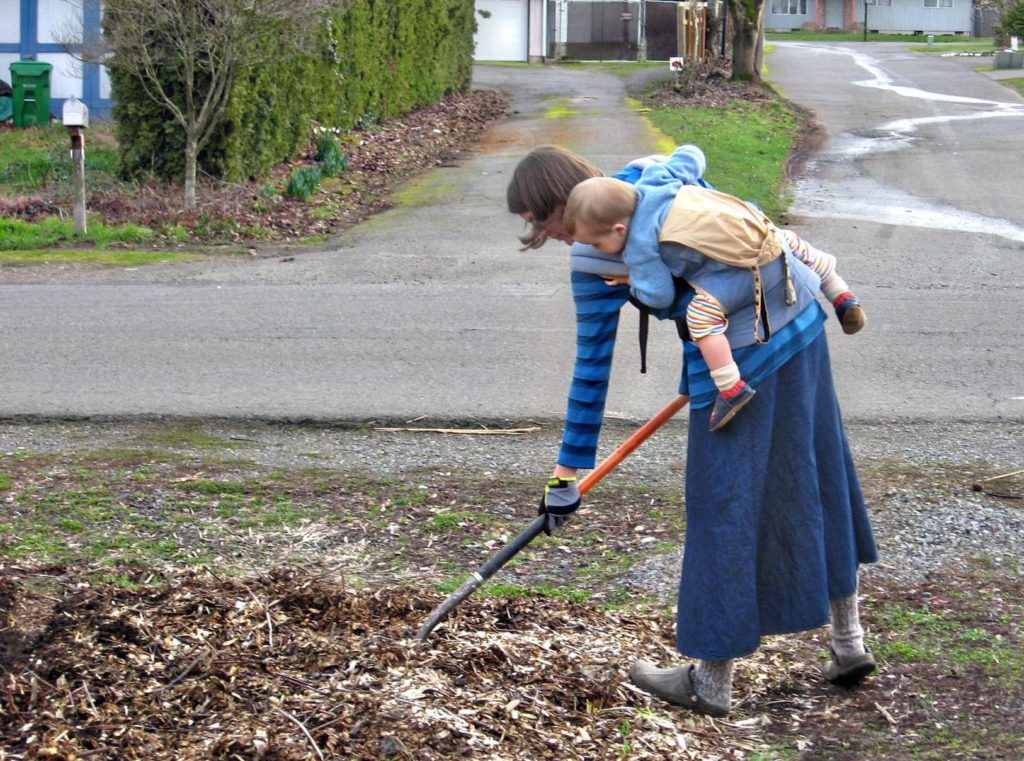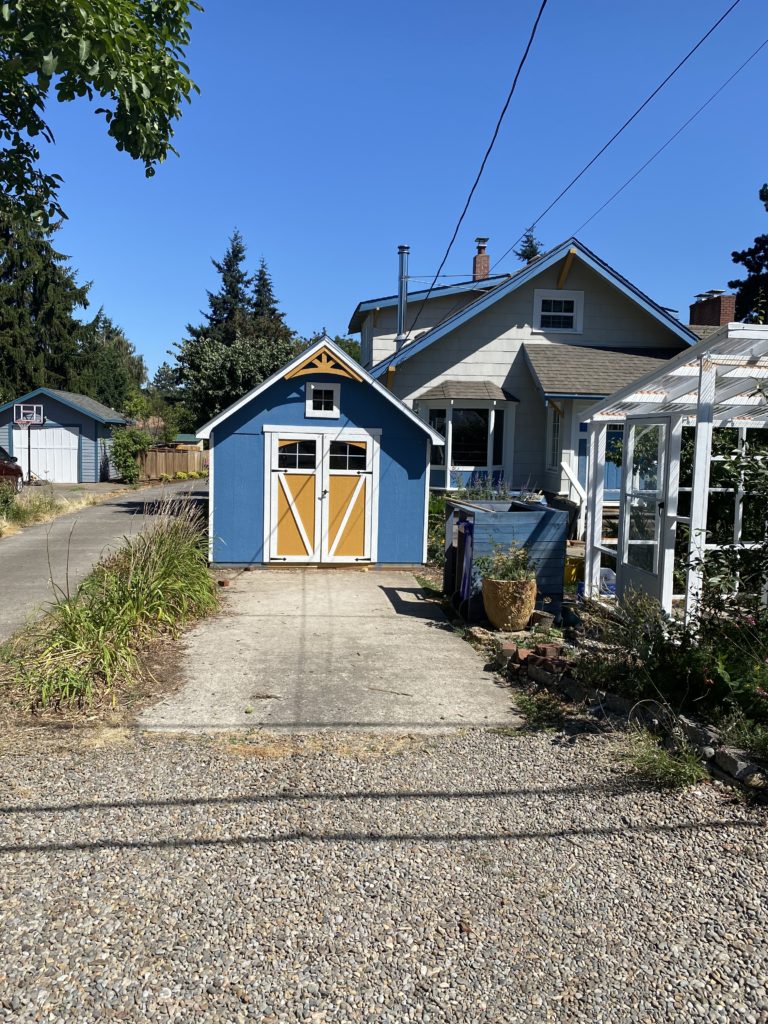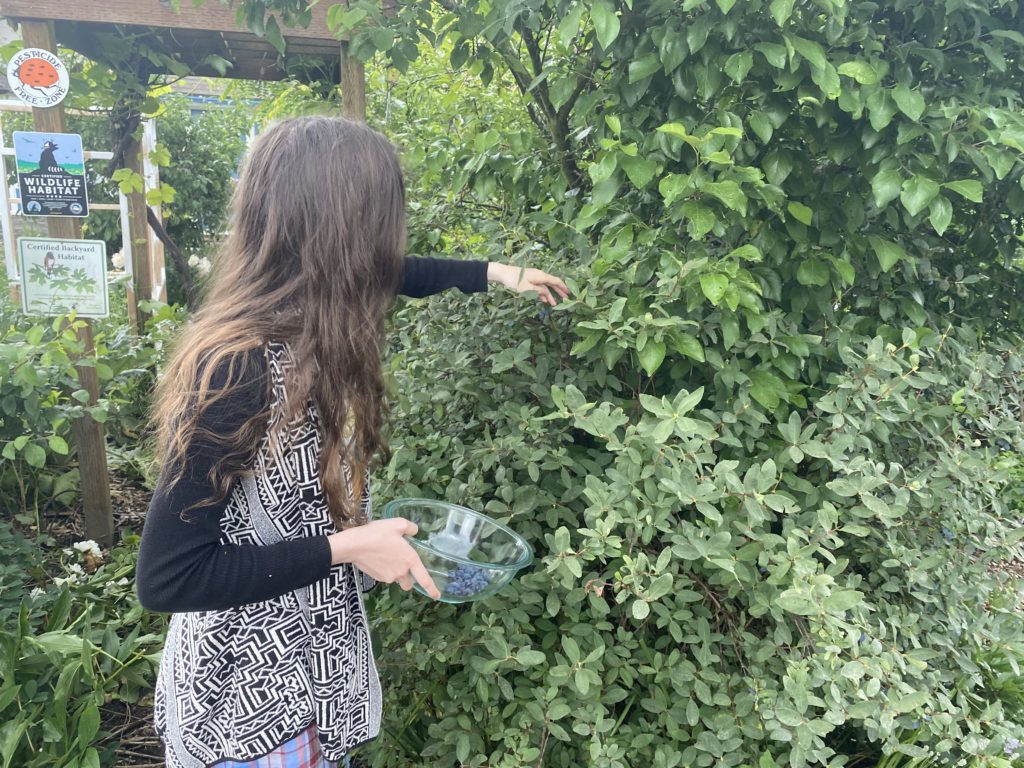
Our Driveway Nearly Ruined Our House
We realized had a water problem in our basement the first autumn after we bought our house. You see, I live in Portland, Oregon, and it rains a lot here. It rains and rains and rains for 9 months of the year. And then we have a dry season July-September. And then it rains again. Sometimes the grey, rainy weather feels endless.
Our house and 1/4 acre had once been part of a larger 1/2 acre plot, but the previous owners flag-lotted the property, and built their house on the back where an orchard had been. Because the flag lot consumed our house’s previous driveway (and garage, which was torn down), the previous owners poured a double-wide driveway in our house’s front yard, taking up enough space for 4 minivans. A huge section of our front yard suddenly became a non-porous surface. It was a disastrous choice for the house.

You can see in the picture above that our house is downhill from the houses across the street. Remember that we live in a rainy climate? And that asphalt and concrete are non-porous surfaces? When it rains, the driveway across the street – and moreso, the street ending in a cul de sac to its right – collect massive quantities of rainwater and funnel it downhill across the street….and straight into my yard.
Now, this water coming onto my property would be less of an issue had the previous owners not poured a giant honkin’ concrete pad right where a garden had been. And even worse, they angled the new driveway toward the house foundation. That first autumn, when heavy rains came, we discovered that this had effectively created was a series of chutes, funneling water from several houses across the street, down the cul de sac road, across the street, down our impermeable driveway…and straight into our basement.
Every time it rained heavily, the area in front of our steps was flooded with 4 inches of water that would work its way down the foundation and into the basement. We put in a sump pump and dehumidifiers – but that still didn’t fix the problem – a problem we battled for years.

The Problem is the Solution
In permaculture, we say, “The problem is the solution.” How can we creatively respond to change? How can we take a difficult situation and turn it into an opportunity?
For years after we bought the house, I would get so frustrated every time heavy rains were forecast. I knew what was going to happen in the coming hours or days: a river of water would come streaming onto my property, down into my basement, damaging my property and creating mold issues inside my home. Instead of getting ticked off and shaking my fist at the weather, I decided to take this as an opportunity to make changes in our yard design, and fix the issue.
As I said, concrete is impermeable. It’s just a chute for water. But rich, fertile soil is highly permeable. And plants drink up water through their roots. And swales slow the flow of water so that plants have time to drink it up before it moves on its way. As I observed how the water was flowing, and how various surfaces in my garden impacted water flow, I began to realize what changes I needed to make: rip out the half of the driveway where most of the water flowed toward the house, and plant gardens carefully design with swales and other ways to slow and sink the water coming onto my property.
Here you can see the driveway removal in progress and the details of my design and thought-process. We hired a professional to cut the concrete into 2ft squares, and then we removed all of them by hand, and I busted up many of them to use as urbanite -(Urbanite is the term coined for pieces of concrete removed from existing structures, and repurposed as an alternative to stone or other building blocks.)

From Concrete Nuisance to Vibrant Garden Space
Where we had removed the driveway, I built 3 sets of raised hugelkultur beds, contoured to further slow and sink the water. I also added a spot for my greenhouse, using cut up urbanite as the foundation (again, not a solid concrete foundation, but blocks that allow for water to sink into the soil below).
The beds were planted with perennials, focusing on fruiting shrubs and pollinator-attractors. Where room allows, I tuck in annuals like pumpkins and inca berries.
The benefits of ripping out half my driveway have proved to be many. Since we added the new garden beds, not one drop of water has reached my basement. My front steps no longer flood when it rains. And I have increased the productive space on my property: increasing food production, pollinator habitat, and furthering shielding my house from an unattractive view of the street and car/city bus noise.
While this project was an investment we had to save for, and took a large amount of sweat equity, it has solved a major problem in our lives, helped restore a functional basement to us, and increased our quality of life, and the beauty of our garden. It has been such a win for our family, and I’m so glad I took the time to observe, follow permaculture design principles, and turn a problem into a multi-faceted, highly-effective solution.


